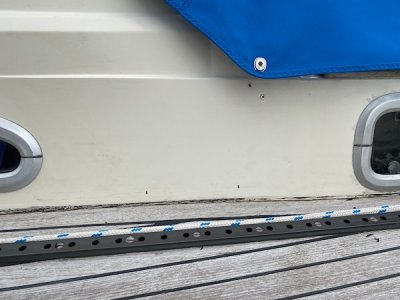MikeBz
Well-known member
I need to recaulk the seam between the cabin side and the adjacent teak plank (GRP boat, teak decks Sika’ed on top). Any tips for making a neat job of where the caulk will meet the GRP? I’m thinking of masking the GRP but inevitably get some caulk over lapping the masking tape, and then be tempted to try and smooth that down resulting in an area of about 3 square miles being smeared with caulk and the seam looking like a mess.

Obviously I need to do a better job of removing traces of old caulk first - difficult to do without scratching the gelcoat.

Obviously I need to do a better job of removing traces of old caulk first - difficult to do without scratching the gelcoat.
